Hey team,
Welcome to the first week of Exercise Essentials!
This week we are delving into my favourite exercise to do in the gym:
Squats
Touching Base:
ICYMI: The impacts of sleep deprivation on your performance:
Push for Better: From the 4rd-26th of July, I will be participating the the Push Up Challenge. It’s a total of 3,214 push ups over 23 days to raise money & awareness for mental health in Australia. Any donations would be much appreciated :)
High Quality Creatine: Lack of sleep? Creatine can boost your cognitive performance and mood, get 5% off your next order from Wonder Foods Australia.
Upgrade to Paid: If you enjoy these articles and want to support the work that goes into them, just click the button below:
What is a Squat?
A squat, as outlined by Wikipedia (the most reliable source of information there is), is an exercise in which a person lowers their hips from a standing position, towards the ground, before standing back up.
Sitting down and standing back up. That’s a squat.
Pretty simple, right?
Squat Variations
When it comes to squat variations, there a far too many that we could talk about.
So, rather than waffling on about them all, I am going to tell you about 4 distinct types of squats that I like to use, why I like them, and as a bonus, an easy modifier that can improve your squat game.
First up, the Goblet Squat.
This is probably my most prescribed squat variation.
Most, if not all people, are capable of doing them, they have a minimal learning curve, and teach a good squat pattern that sets you up for success when moving onto barbell variations.
It’s not a squat variation that can be loaded that heavily, as the size of the dumbbells can interfere or the person’s arm strength becomes the limiting factor.
The Front Squat, everyone’s favourite (lol).
This is a squat variation that I have a love-hate relationship with.
I love using it as a progression from a Goblet Squat. It forces you to have a very good squat pattern, small issues that might not affect your Goblet Squat, will be exacerbated here.
What I hate, the choking sensation. If you are doing a Front Squat correctly, the bar will be pressing on the base of your throat (fun, I know).
Unfortunately, the placement of the bar means you are being pulled forwards towards the ground, this makes your erector spinae work hard to keep you upright. So, similar to Goblet Squats, Front Squats are limited by other factors before leg strength becomes an issue.
My personal favourite, the Back Squat.
Straight up just the best exercise in the gym. No if, buts, or maybes. It just is.
As we’ve discussed previously, Back Squats have a great transfer into other aspects of your everyday life and sporting performance.
The bar placement of a Back Squat also allows for more weight to be lifted and removes the limiting factors that occur in Goblet and Front Squats. This just means that we can specifically overload the leg muscles to improve their strength.
Lastly, the Overhead Squat.
This is probably the hardest of all squat variations.
Not only does it require good hip and ankle mobility.
But, you also need a lot of thoracic spine and shoulder mobility to have a good Overhead Squat pattern.
And that’s before your start to add any weight to them.
For me, I like to use the Overhead Squat as a mobility exercise, rather than a strength one. By spending time in an Overhead Squat, we can improve the mobility in the areas mentioned above (ankle, hip, thoracic spine, and shoulders). Most people don’t have the mobility required in these areas to utilise the Overhead Squat as a strength exercise (gymnasts, weightlifters, & swimmers excluded).
A Handy Modifier
The slant board, or anything that props your heels up (small plates or weightlifting shoes) so that they are higher than the balls of your feet.
This little chock just opens up a bit more ankle range, allowing you to squat deeper.
Very helpful if your ankles or hips feel like they get “locked” during a squat and you struggle to go lower than that point without sacrificing form.
Muscles Involved
We could go super detailed here and talk about the activation percentage of each muscle and how it changes for each variation.
But that is fun for about 2 people.
So, lets keep it simple.
Agonist Muscles: The Prime Movers
When we talk about prime movers, we mean the muscles that are doing the bulk of the lifting.
During a squat, that is the:
Gluteal muscles (butt muscles)
Quadriceps (front thigh muscles)
Depending on what type of squat you are doing, the involvement of these muscle groups is different.
A Front Squat will be more quad dominant.
A Back Squat will be more glute dominant.
Synergists: Helping Out
These muscles are active during a lift, but aren’t doing the main bulk of the lifting. In fact, some are opposing the prime movers to stop your body from ripping itself apart.
For a squat, this is the following muscles:
Hamstrings (back of your thigh)
Erector Spinae (either side of your spine)
Adductor Magnus (inner thigh)
Gastrocnemius (calves)
Stabilisers:
These muscles aren’t directly involved with the lifting movement, they keep all the force being generated by the prime movers and synergists moving in the right direction. Essentially, they are preventing energy leaks.
During a squat, they are:
Deep abdominal muscles (bit hard to palpate/see these)
Rectus abdominis (6-pack muscles)
External obliques (love-handle muscles)
That’s All Folks!
I hope you enjoyed the first edition of Exercise Essentials.
Stay tuned because next week we will be diving into single/split leg exercises.
Chat soon,
Jono


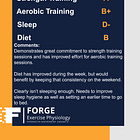
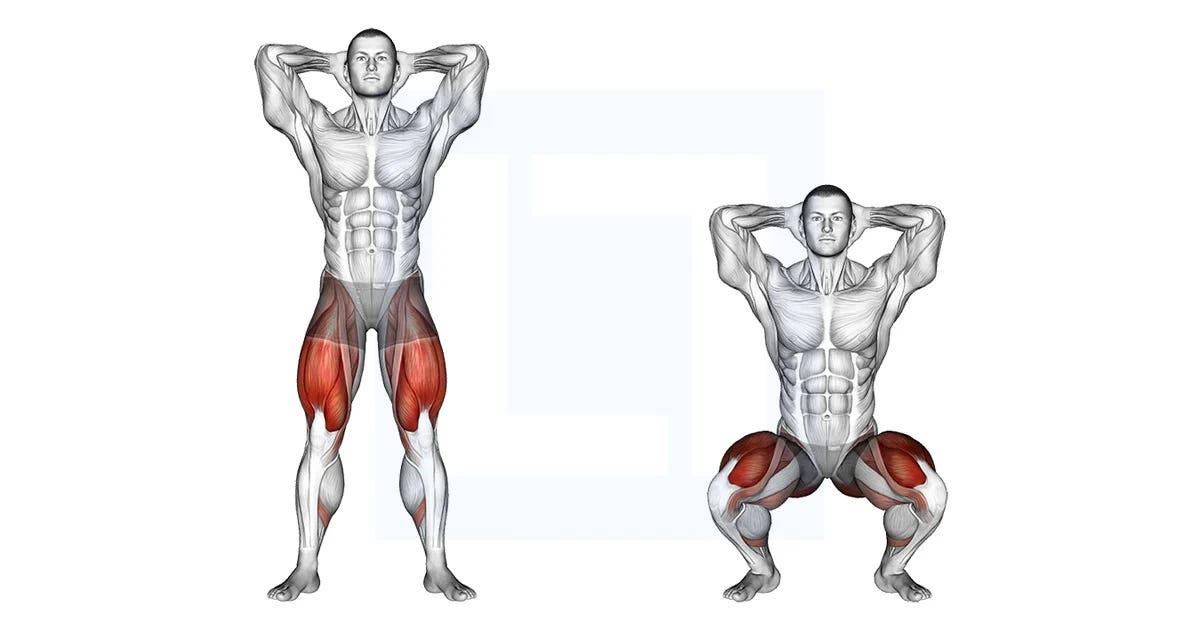
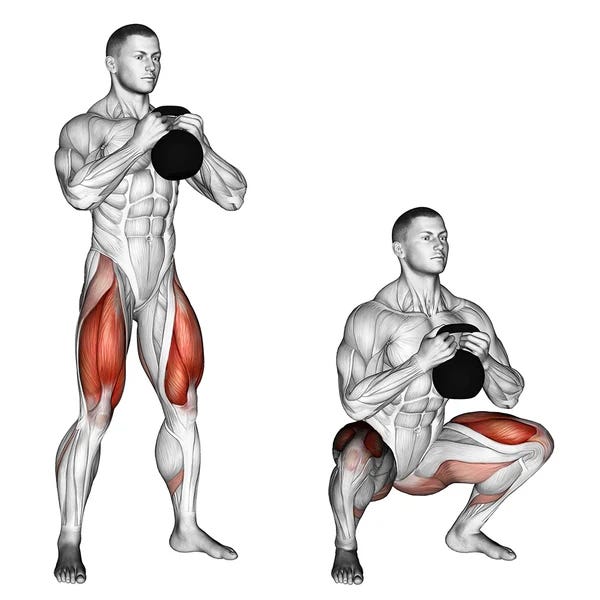
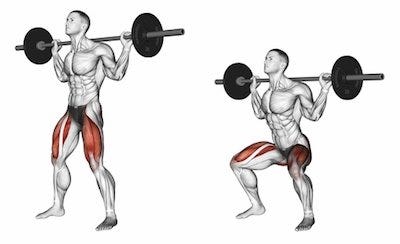
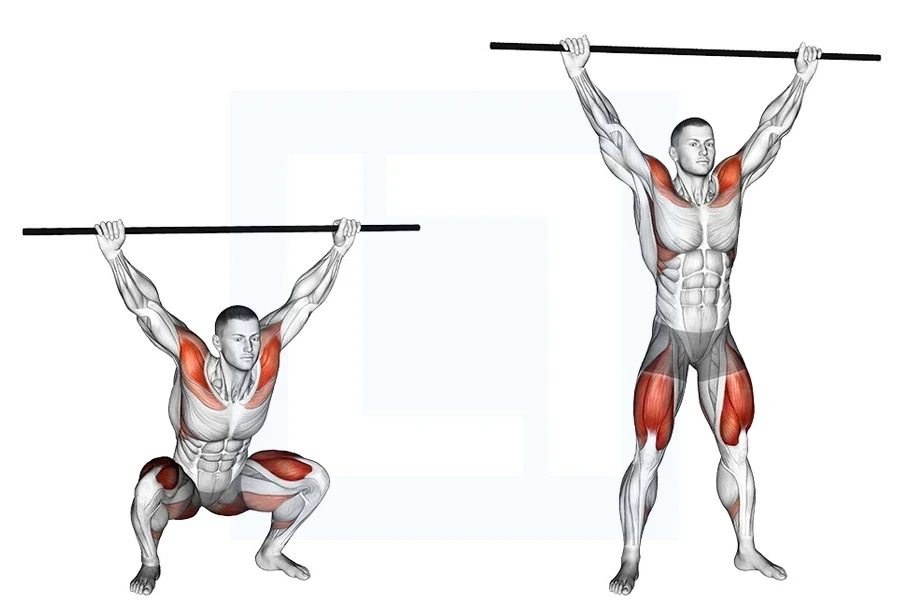
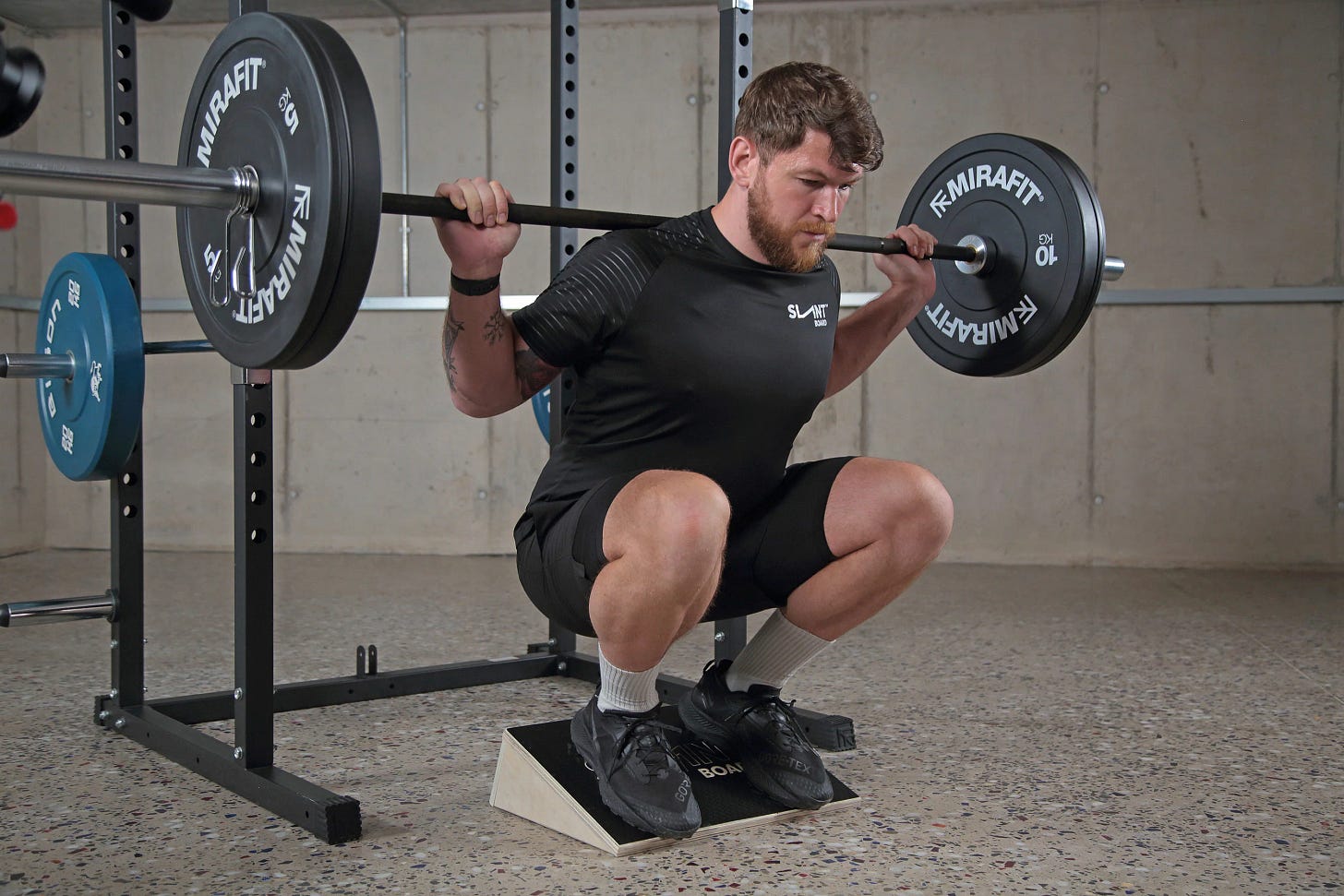
I love doing air squats during the workday to keep movement going. Great for anyone working a desk job.